Reduced Order Modeling
iMSEL investigates and develops groundbreaking reduced order modeling (ROM) techniques to bridge across the entire modeling and simulation hierarchy and allow fast turnaround (minutes to hours as opposed to days, weeks, or even months). The ROMs enable real-time or near real-time simulation capabilities, and can be used for large-scale design optimization & virtual prototyping, uncertainty quantification, prognostics & diagnostics, and hardware in loop (HIL) testing of embedded systems. ROM methodologies being analyzed by iMSEL include:
-
Equation-based Model Order Reduction
-
Data-driven ROM (Surrogate Model)
-
Closed-form and Analytical Model
Equation-based
Equation-based reduced order modeling, i.e., model order reduction (MOR) is applicable when physics-governing equations are available in the discretized form. The large equation set is projected onto a low-dimensional subspace, resulting in a reduced set for fast simulation. A significant amount of effort in MOR focuses on identifying the best-performed subspace yielding the lowest dimension without noticeable compromise in model fidelity. Specific MOR methods studied by iMSEL include Krylove subspace (moment matching), singular value decomposition-based (proper orthogonal decomposition, truncated balanced truncation, and dynamic model decomposition), and their combinations

POD Mode 1
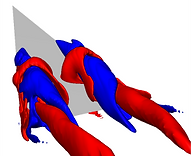
POD Mode 2
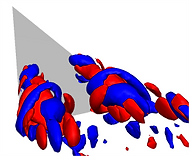

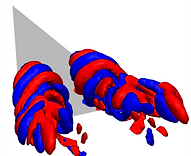
POD Mode 3
POD Mode 4
POD Mode 5
First five proper orthogonal decomposition (POD) modes of the streamwise velocity extracted from unsteady simulation of a delta wing with a large AoA = 24 deg. The iso-surfaces colored in red and blue, respectively, denote the values with opposite signs in the mode. The leading mode represents flow structures with large spatial scales and high kinetic energy, while the higher-order model indicates the flow structure with small spatial scales and low kinetic energy. Twisted flow structures are clearly observed in the high-order modes.
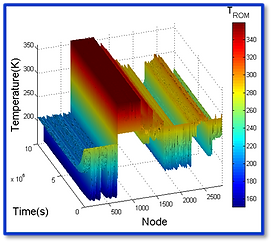
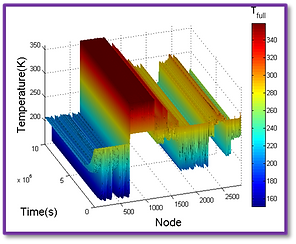
Spacecraft Thermal Analysis
Computational models and analysis are increasingly used to support the engineering of spacecraft at every stage of the development. Every single element in the spacecraft needs to be thermally interrogated to ensure that its temperature, thermal distortion and stability remain in the pre-defined operating envelope and in-orbit performance requirements are met during all mission phases. iMSEL has developed POD-based thermal ROMs for NASA's Laser Interferometer Space Antenna (LISA), a constellation mission spacecraft to detect and observe gravitational waves in the 0.1 mHz to 0.1 Hz frequency band. ROMs has been used to accelerate the heat transfer analysis (involving conduction and radiation) for a large number of orbits with different parameters to evaluate the quasi-steady-state and drifting behavior. In contrast to the full-scale LISA model ~200X speed with relative error less than 1%. Software to automate ROM generation and computation has been developed and delivered to NASA for testing.

Publications:
J. Qian, Y. Wang*, H. Song, K. Pant, "Projection-Based Reduced Order Modeling For Spacecraft Thermal Analysis", Journal of Spacecraft and Rockets, Vol. 52, pp. 978-989, 2015.
Y. Wang*, H. Song, K. Pant, H. Peabody, J. Ku, and C.D.Butler, “A Projection-Based Model Order Reduction Simulation Tool for Spacecraft Thermal Analysis”, TFAWS, 2011
There is a clear and unmet need for an integrated simulation tool for accurate, in-line, real-time analysis of closed-loop digital simulation. The key member in iMSEL has developed thermal ROMs and a real-time thermal history prediction tool for accurate analysis of complex 3D high-speed vehicles/targets with multi-layered materials and paint coatings in a broad spectrum of environments. Excellent agreement between the full CFD model and ROM with a relative error <1% and orders-of-magnitude (~100X) speedup for nonlinear heat transfer of the 3D whole target have been achieved. Integrated ROM simulation framework for model generation, computation, and verification has also been established.
ROM (32 Dim)
High-speed Vehicle Thermal Analysis
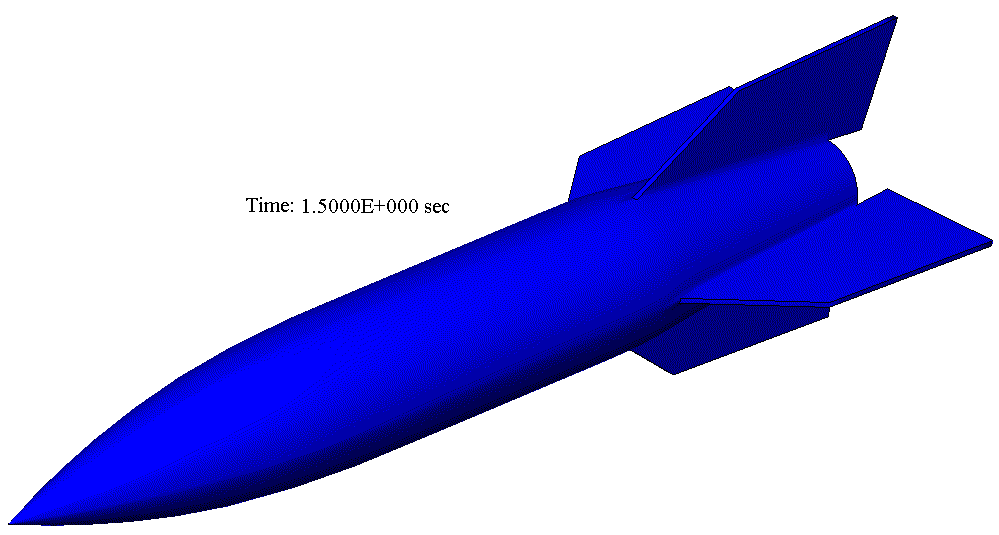
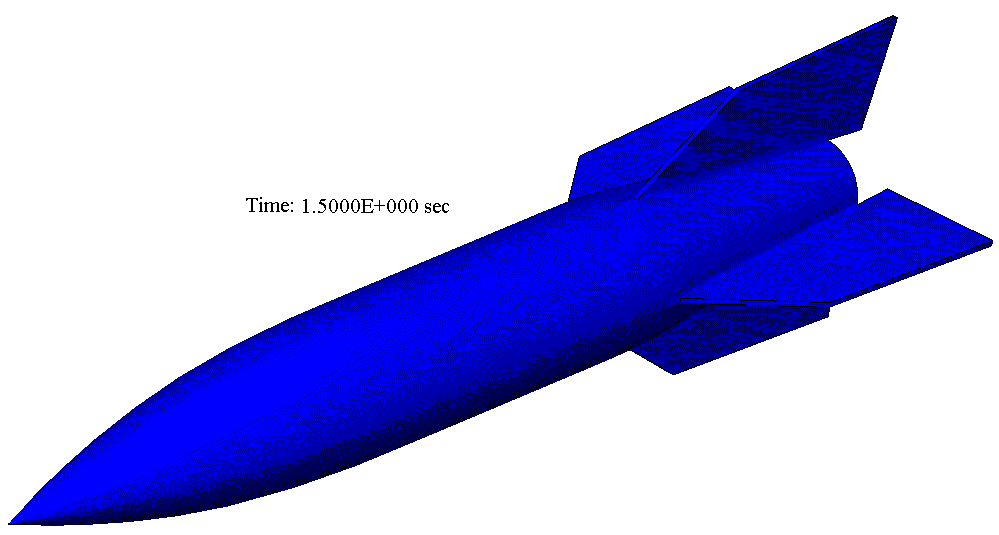
Full Model (~9,000 Dim)
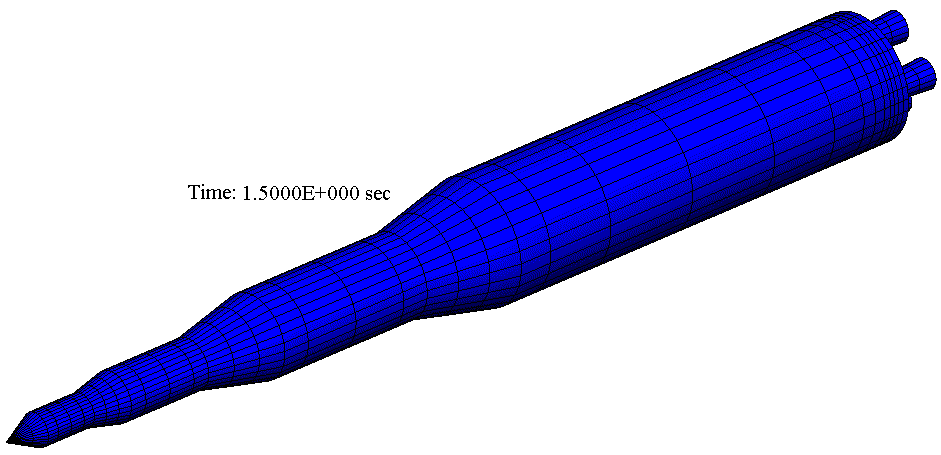
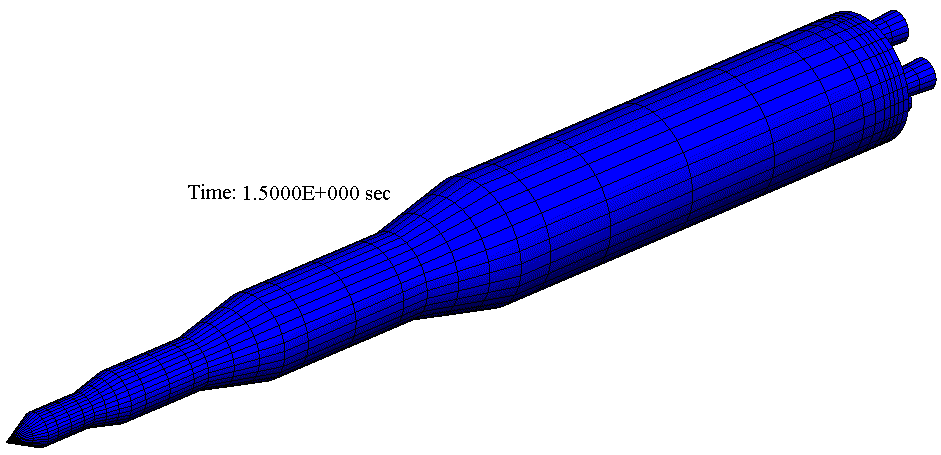
Publications:
Y. Wang*, H. Song, K. Pant, "An Accurate Real-Time Simulation Tool for Generating Missile Hardbody Thermal Histories", National Space & Missile Materials Symposium (NSMMS) Commercial and Government Responsive Access to Space Technology Exchange (CRASTE), 2014.
X-56A MUTT (Flexible Aircraft) Aeroservoelasticity


Full Model (192 states)
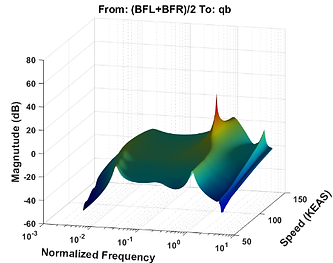
ROM (16 states)
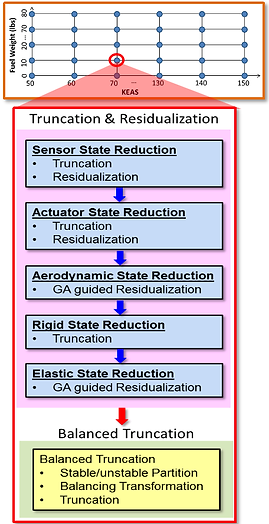
Design of a modern flexible aircraft with a safe and acceptable flight envelope demands detailed modeling and high fidelity simulations of aeroservoelastic (ASE) systems prior to flight tests in order to investigate the source of potential aeroelastic (AE) failures. While full-order models coupled the nonlinear aerodynamics with structural models are capable of accurate prediction of underlying AE phenomena and onset, their prohibitive computational cost, low speed, nonlinear nature, as well as difficulty to deploy controllers with high-state-order models render it impractical for integration in the design environment involving concurrent ASE analysis and control synthesis and design. IMSEL has developed a model order reduction (MOR) framework to construct linear parameter-varying (LPV) reduced order models (ROM) of flexible aircrafts for aeroservoelasticity (ASE) analysis and control synthesis in broad 2D flight parameter space. The framework includes two key elements: (1) Genetic algorithms (GAs) to automatically determine physical states for reduction and generate ROMs at grid points within parameter space while minimizing the trial-and-error process; and (2) balanced truncation for unstable systems in conjunction with the congruence transformation technique to achieve locally optimal realization and “weak” fulfillment of state consistency across the entire parameter space. Therefore ASE ROM at any flight condition can be obtained simply through model interpolation. The methodology has been demonstrated using the pitch-plant model of X-56A MUTT currently being tested at NASA/AFRC for flutter suppression and gust load alleviation: more than 12X reduction in the number of states relative to the original model while preserving model and synthesis accuracy. The present MOR framework can be used by control engineers for robust ASE controller synthesis and novel vehicle design.
Publications:
Zhu, Y. Wang*, K. Pant, "Genetic Algorithm-based Model Order Reduction of Aeroservoelastic Systems with Consistent States", Journal of Aircraft, Vol. 54, pp. 1443-1453, 2017
Zhu, Y. Wang*, K. Pant, P.M. Suh, M.J. Brenner, "Genetic Algorithm-Guided, Adaptive Model Order Reduction of Flexible Aircrafts", 58th AIAA/ASCE/AHS/ASC Structures, Structural Dynamics, and Material Conference, Paper ID AIAA 2017-1598, 2017.
Y. Wang*, H. Song, K. Pant, M.J. Brenner, P. Suh, "Model Order Reduction of Aeroservoelastic Model of Flexible Aircraft", 57th AIAA/ASCE/AHS/ASC Structures, Structural Dynamics, and Material Conference, Paper ID. AIAA 2016-1222, 2016.
Heat Transfer, Species Transport & Kinetics in Microfluidics
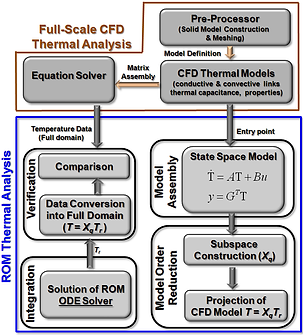
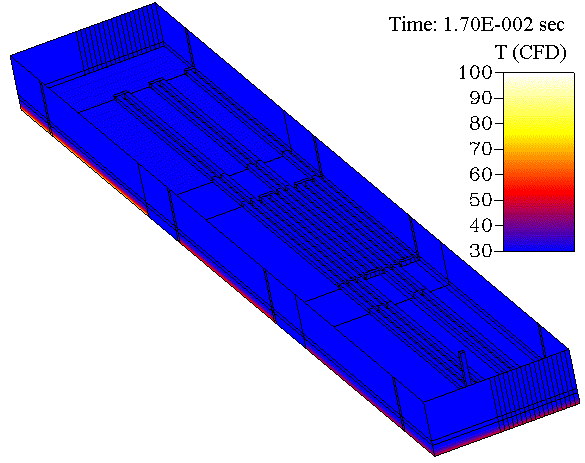
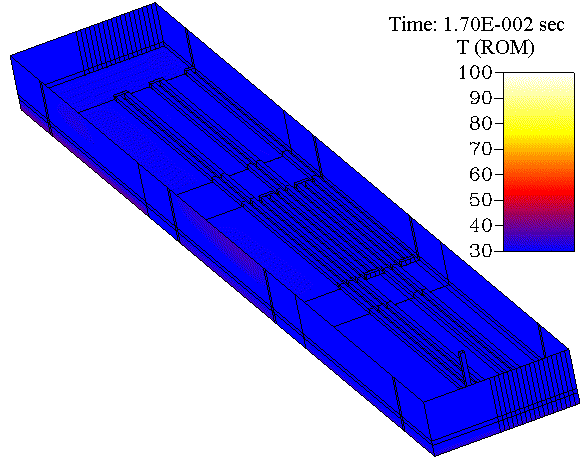
Publications:
Y. Wang*, H. Song, K. Pant, "A reduced-order model for whole-chip thermal analysis of microfluidic lab-on-a-chip systems", Microfluidics and Nanofluidics, Vol. 16, pp. 369-380, 2014.
In many microfluidic lab on chip (LoC) applications, thermal environments need to be precisely controlled for proper execution of biochemical and cellular assays, such as PCR, high-through kinetics analysis, among others. Thermal analysis in microfluidics poses formidable challenges to the chip design as heat propagates in the entire chip domain rather than only in the fluidic channels, leading to more substantial model sizes and slower thermal diffusion process. Both factors contribute to the prohibitively computational cost associated with whole-chip thermal analysis, rendering it ill-suited for concept evaluation, operational optimization, as well as closed-loop thermal control and management, where rapid (near real-time) iterative simulation capability is strongly desired for fast turnaround times. iMSEL has developed a Krylov subspace projection-based Reduced Order Model (ROM) for whole microfluidic chip thermal analysis, including conjugate heat transfer. Case studies using practically relevant thermal microfluidic chip demonstrate that the ROM matches the full-scale model very well in spatiotemporal thermal profiles (<0.5% relative error in pertinent time scales) along with over three orders-of-magnitude acceleration in computational speed. The salient model reusability and real-time simulation capability renders it amenable for operational optimization and in-line thermal control and management of microfluidic systems and devices. The Krylov MOR framework has been extended to species transport and surface kinetics in both the 2D and 3D microfluidic channels (below).

Data-driven
Data-driven modeling or surrogate modeling techniques have received a great deal of attention from engineering community. Its underlying principle is to capture a system response in high-dimension parameter space through functional mapping between input-output data, i.e., black-box type models. Data driven modeling methods, such as machine learning, Kriging, response surface method, system identification, etc. have found broad use in aerospace, energy and thermal management, and others. Recently data-driven modeling has played more important roles in physics-based computations and varying-fidelity model construction, where the complex input-output behavior (even in high-dimensional parameter space) can be predicted in real-time without compromising accuracy.

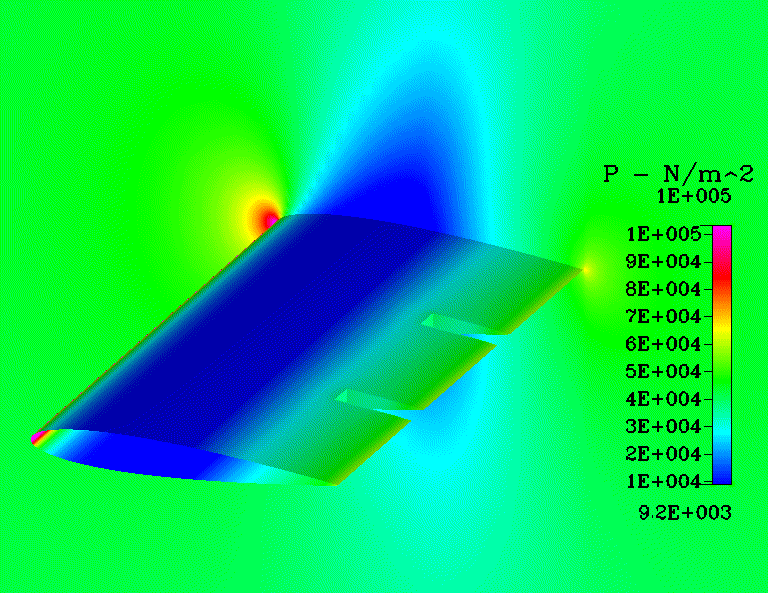

Without Flap Control
Aeroservoelasticity
Publications:
H. Song, J. Qian, Y. Wang* et al. "Development of Aeroelastic and Aeroservoelastic Reduced Order Models for Active Structural Control", 56th AIAA/ASCE/AHS/ASC Structures, Structural Dynamics, and Material Conference, paper ID: 2015-2055, 2015
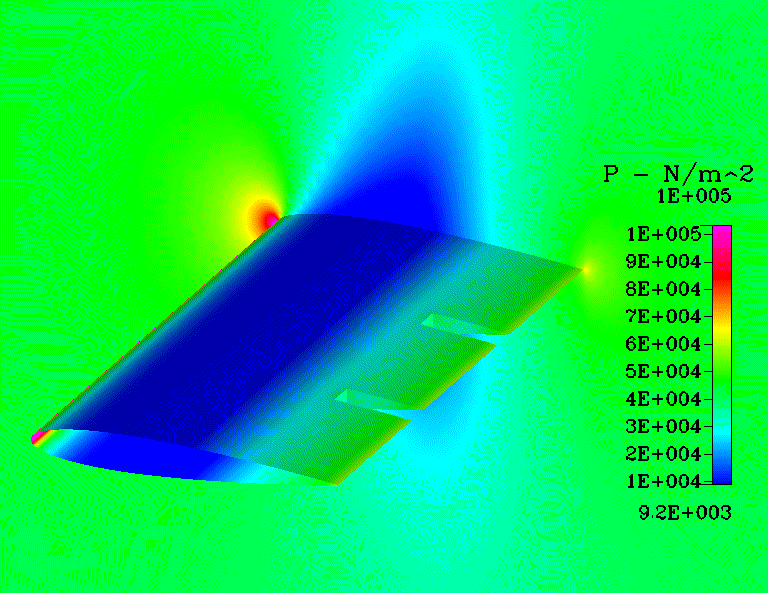
With Flap Control

Flight performance of aerospace systems is characterized by the interaction between aerodynamics, structural dynamics, and flight control dynamics. Although high-fidelity simulation coupling the nonlinear aerodynamics with structural models enables a direct insight into the aforementioned phenomena, its prohibitive computational cost and speed mismatch render it impractical for integration in the design environment involving concurrent AE and control optimization. iMSEL has developed a holistic methodology and framework that uniquely integrates the aerodynamics reduced order model (ROM), structural dynamics model, and active structural control into a single platform to enable integrated, ultra-fast ROMs for efficient Aeroelastic (AE) and Aeroservoelastic (ASE) analysis, and controller design in various flight parameters. The parametric AE/ASE ROM show excellent agreement with high-fidelity CFD-CSD simulations (<1% relative error), but at significantly reduced computational cost (typically 10,000-100,000X speedup). The figures above illustrate ASE results of 3D wing section with a central flap control. The flap control saliently suppresses the flutter in the plunge motion, and the ROM (blue symbols) shows excellent agreement with the high fidelity CFD-CSD (red curves) along with 140,000X speedup.
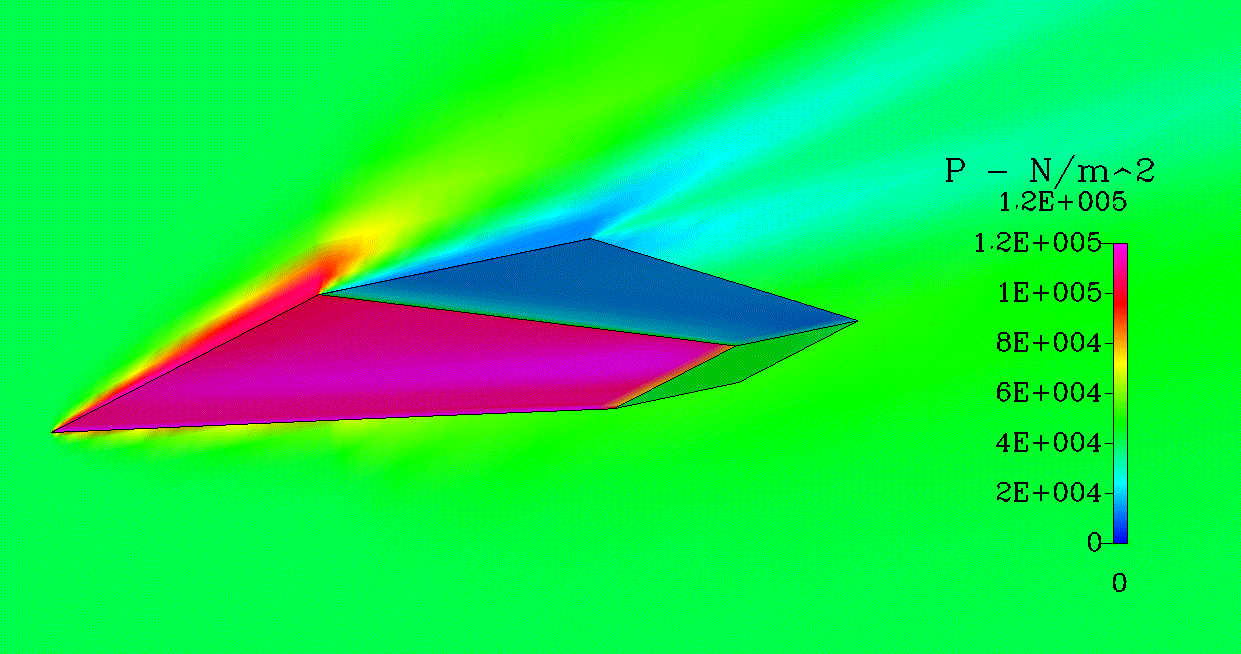
AeroThermoservoelasticity
The recent successful flight test of X-51 waverider has demonstrated significant promise of hypersonic technology for high speed strike weapon (HSSW), rapid access to space, reconnaissance, and global reach. However, aerothermoelasticity of hypersonic vehicle involves an unprecedented level of fluid-thermal-structural interactions (FTSI), rendering analysis and design of its control system at terminal flight conditions extremely challenging. Therefore the ability to accurately predict FTSI in conjunction with the control system, viz., AeroThermoServoElasticity (ATSE), is essential for successful guidance, navigation, and control (GNC) of hypersonic vehicles. The key member of iMSEL has been developing reliable reduced order modeling (ROM) technologies to automatically generate parameter-varying (PV) aerothermoservoelastic (ATSE) ROMs for fast Fluid-Thermal-Structural Interactions (FTSI) assessment and control system design. Our preliminary study demonstrated up to six orders of magnitudes speedup and error < 6% relative to high-fidelity CFD/CSD at various flight conditions.
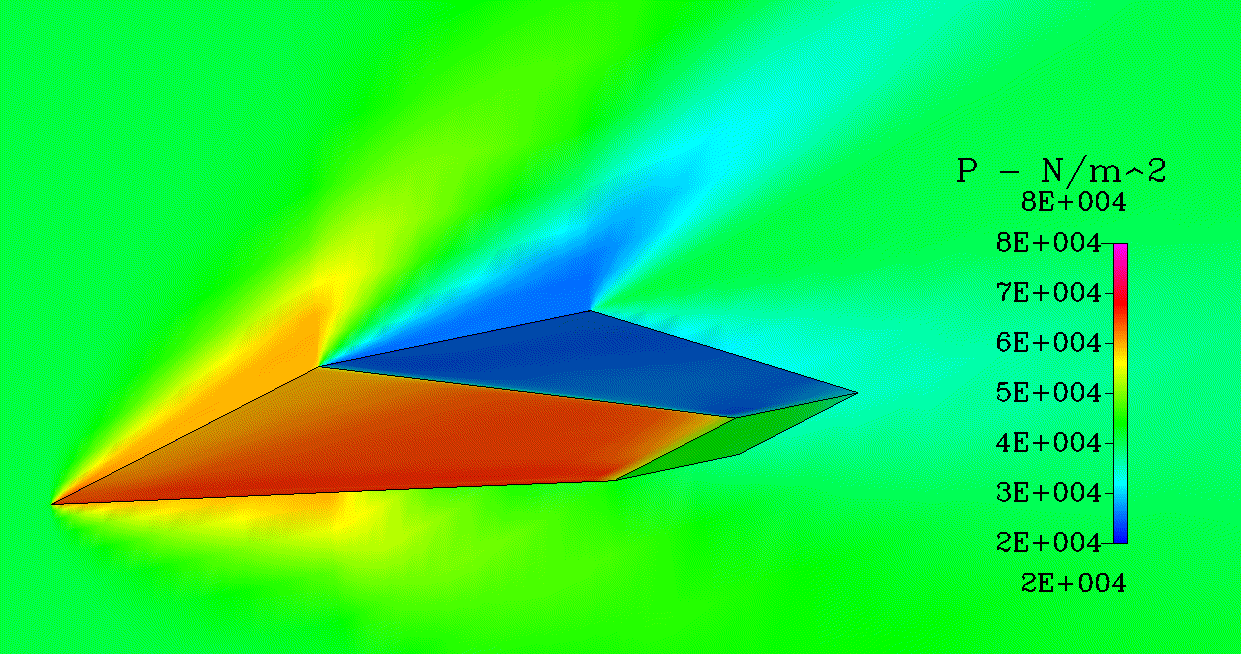
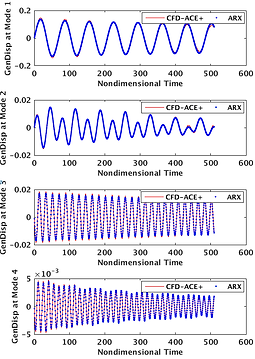
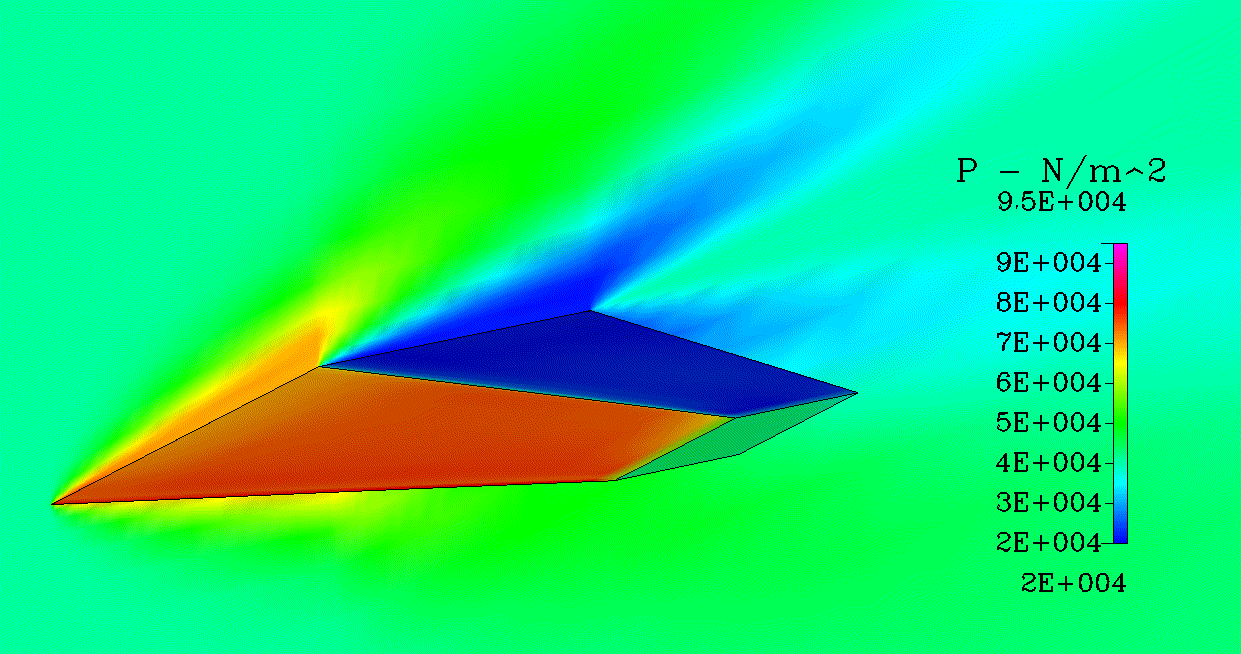
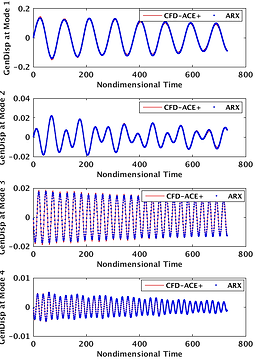
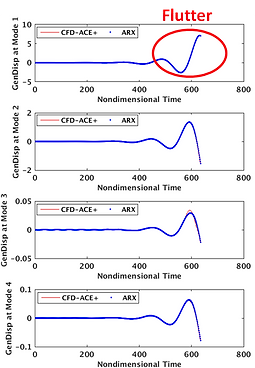
Ma = 3
Ma = 4.3
Ma = 7.8
Rapid Thermal Processing
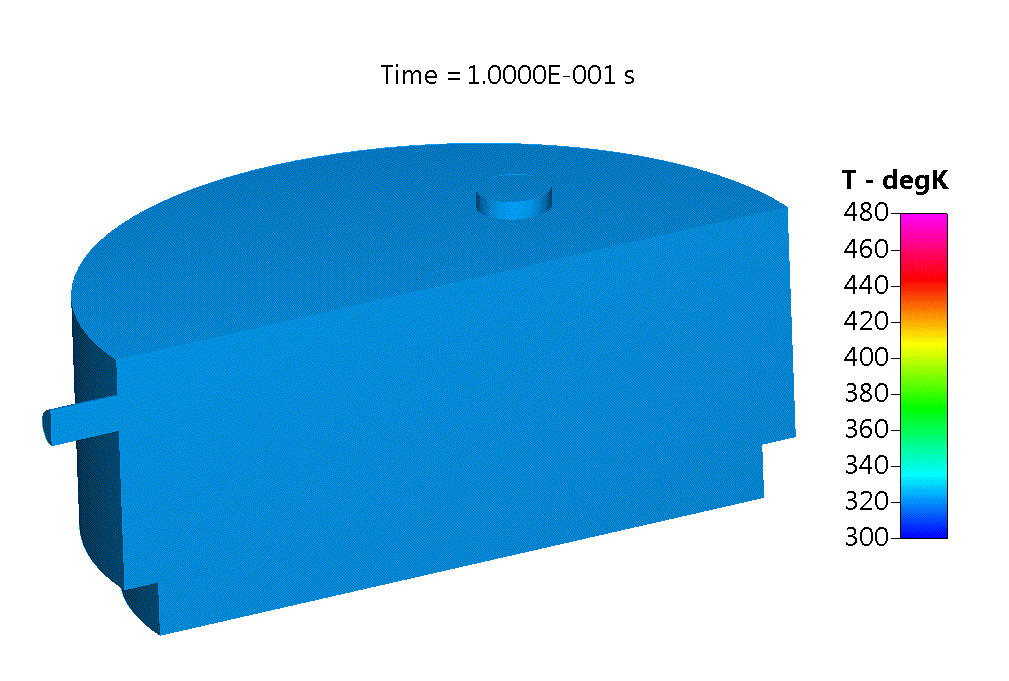
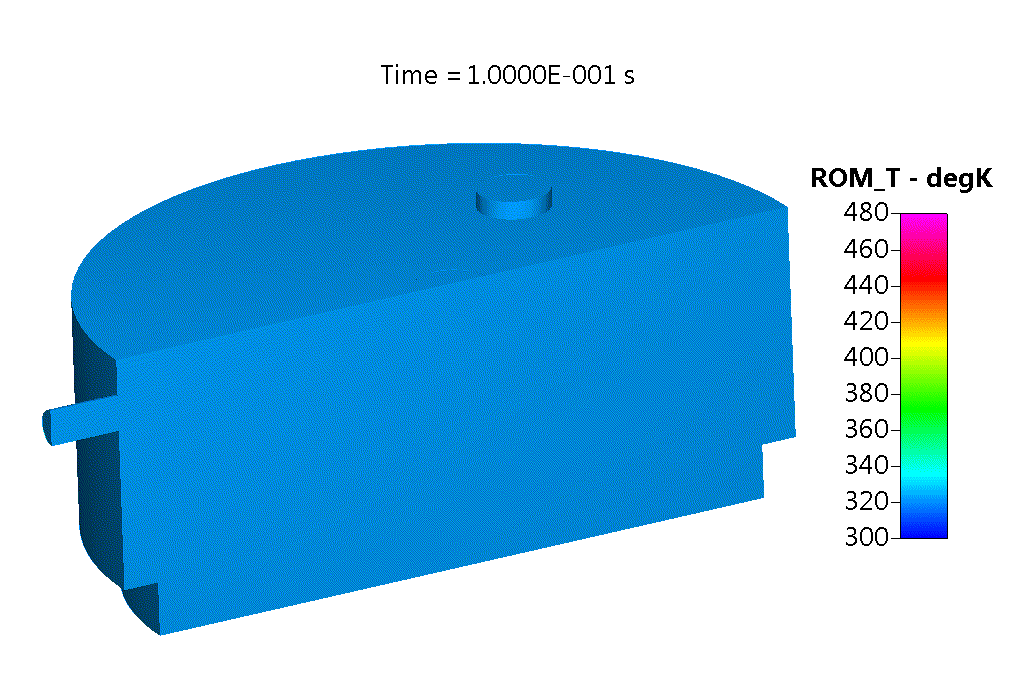
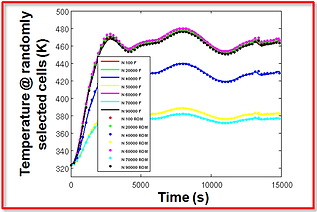
iMSEL has also developed data-driven modeling method to predict transient heat transfer with strong nonlinearity in rapid thermal processing of semi-conductor. The figures in the left and the middle show the 3D spatiotemporal distribution of temperature within a chemical vapor deposition chamber predicted by the full-scale CFD model and the data-driven ROM. The figure on the right illustrates the quantitative comparison of both at selected probes, and excellent agreement with relative error < 1% and speedup up to 3,300X have been observed


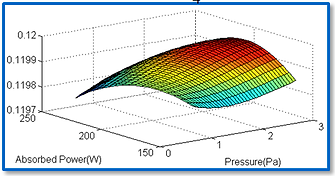
The data-driven modeling has also been extended to rapid thermal process involving complex chemistry cascade, such as the inductively coupled plasma (ICP) etching (left). High-fidelity CFD (ACE+) involving heat transfer, plasma, chemistry has been performed to evaluate the spatial variables, e.g., temperature, SiH4, Ar+, Ne, SiH2, O2, etc. and the SiO2 deposition/etch rate as a function of absorbed power and pressure, and has been compared against the ROM (middle). Excellent agreement between them has been observed, and most importantly, 180,000X speedup has been achieved leading to ultra-fast simulation to portray the response surface of each variables for quick diagnostics and operating optimization.
Closed-form
When the governing equation is amenable to the analytical solution (e.g., simple physics or simple geometry), closed form solution can be obtained. Typical closed-form solution can be obtained through separation of variables, Laplace transform, etc. In prior efforts, iMSEL has also developed multiple closed-form or semi-analytical solutions to species transport and reaction kinetics in microfluidics. The closed-form model not only offers unprecedented computational speed, but also in-depth insight into the underlying physics.
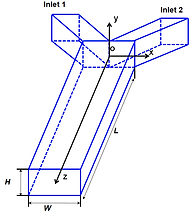


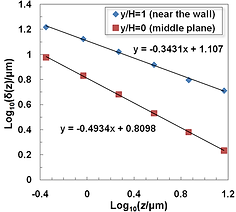

Key member of iMSEL has developed a three-dimensional analytical model to investigate cross-stream diffusion transport in rectangular microchannels with arbitrary aspect ratios under pressure-driven flow. The Fourier series solution to the three-dimensional convection-diffusion equation is obtained using a double integral transformation method and associated eigensystem calculation. A phase diagram derived from the dimensional analysis is attained to thoroughly interrogate the characteristics in various transport regimes and examine the validity of the model. The model also delineates the scaling relationship between the interfacial diffusion layer (delta) and the the downstream distance z or the average axial velocity Uavg (one-third and one-half law, respectively, at the top and bottom wall. The analytical model is verified against both experimental and numerical models in terms of the concentration profile, diffusion scaling law, and mixing efficiency with excellent agreement (with <0.5% relative error). Quantitative comparison against other prior analytical models in extensive parameter space demonstrates that the model accommodates much broader transport regimes with significantly enhanced applicability.
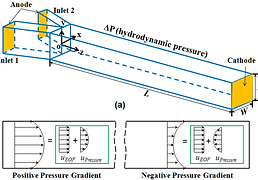

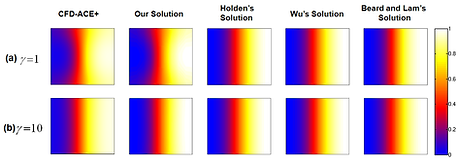
A closed-form model has also been developed to study cross-stream diffusion of an analyte in a rectangular microchannel under combined electroosmotic flow (EOF) and pressure driven flow and to investigate the heterogeneous transport behavior and spatially-dependent diffusion scaling law (left). The model is capable of accurately describing 3D steady-state convection-diffusion in microchannels with arbitrary aspect ratios. The model is verified against high-fidelity numerical simulation in terms of flow velocity and analyte concentration profiles with excellent agreement, <0.3% relative error (middle). Parametric analysis interrogates the effect of the combined flow velocity field on the transport behavior in both the positive pressure gradient (PPG) and negative pressure gradient (NPG) cases. For the first time, the evolution from the spindle-shaped concentration profile in the PPG case, via the stripe-shaped profile (pure EOF), and finally to the butterfly-shaped profile in the PPG case is obtained using the analytical model along with a quantitative depiction of the spatially-dependent diffusion layer thickness and scaling law across a wide range of the parameter space.
Publications:
H. Song*, Y. Wang, K. Pant, “Scaling law for cross-stream diffusion in microchannels under combined electroosmotic and pressure driven flow”, Microfluidics and Nanofluidics, Vol. 14, pp. 371-382, 2013.
H. Song*, Y. Wang, K. Pant, “Cross-stream diffusion under pressure-driven flow in microchannels with arbitrary aspect ratios: a phase diagram study using a three-dimensional analytical model”, Microfluidics and Nanofluidics, Vol. 12, pp. 265-277, 2012.
H. Song, Y. Wang*, K. Pant, "Three-Dimensional Analytical Model for Pressure-Driven Cross-Stream Diffusion in Microchannels With Arbitrary Aspect Ratios", ASME 3rd International Conference on Micro/Nanoscale Heat and Mass Transfer (MNHMT), pp. 27-37, 2012